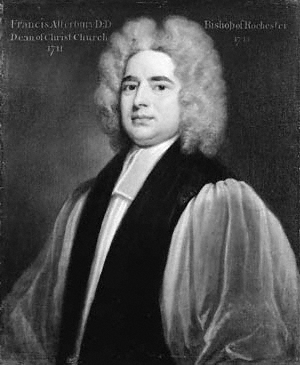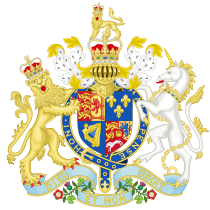41 suggestions for "legislation"
Act of Six Articles 1539Act of Parliament introduced to curb excessive Protestant reform and to impose religious conformity.
Act of Supremacy 1534Act of Parliament acknowledging King Henry VIII as the supreme leader of the Church of England.
Act of Uniformity 1558One of the Acts of Parliament collectively known as the Elizabethan Religious Settlement. It introduced a Common Book of Prayer, and obliged everyone to attend their parish church every Sunday and on holy days. Those who refused were known as recusants.
Anatomy Act 1832Act of Parliament intended to increase the number or corpses available for dissection by medical students.
Arsenic Act 1851The Arsenic Act 1851 (14 & 15 Vict c. 13) was passed by the United Kingdom Parliament in 1851, during the reign of Queen Victoria in response increasing public concern over accidental and deliberate arsenic poisonings.
Barbed Wire Act 1893Act of the UK Parliament to prohibit the use of barbed wire where it might pose a danger to those using the highway.
Benefit of clergyLegally enshrined right of any clergyman facing prosecution for a felony in a royal court to have the case heard instead in an ecclesiastical court.
Benefit of Clergy Act 1575Act of Parliament that removed the right of those charged with rape or burglary to claim benefit of clergy, and so to be tried in an ecclesiastical court.
BooklandOne of the three major types of land ownership in Anglo-Saxon England. Also an informal name given to the prefix of an ISBN.
Bubble Act 1720An Act of the Parliament of Great Britain to prohibit the formation of new joint-stock companies unless approved by royal charter.
Burial Act 1852Act of parliament to prohibit burials in the metropolis of London.
Burying in Woollens ActsThere were three Burying in Woollens Acts passed during the 17th century, to support the domestic woollen trade in the face of increasing competition from foreign imports
Cat and Mouse Act 1913Act of Parliament intended to deal with the public outcry resulting from the treatment of suffragettes who went on hunger strike while in prison.
Combination ActsActs of Parliament passed by the Tory government of William Pitt the Younger in response to its fear of unrest or revolution among the working classes. They banned workers from combining to form trade unions and prevented them from striking, calling for shorter hours or increased pay.
Commonwealth (Adultery) Act 1650Act passed by the Rump Parliament in 1650 making fornication, adultery and incest secular offences.
Crewe’s Act 1782Act of Parliament to disenfranchise all government officials involved in the collection or management of statutory duties.
Deceased Wife’s Sister’s Marriage Act 1907Act of Parliament making it legal for the first time in the United Kingdom for a man to marry his dead wife's sister.
Diseases Prevention (Metropolis) Act 1883Act of Parliament of the United Kingdom passed in 1883 to deal with London's sick poor.
Duties on Clocks and Watches Act 1797Act of the Parliament of Great Britain imposing a tax on the ownership of clocks and watches.
Education Act 1496Act of the Scottish Parliament to make education mandatory for the eldest sons of barons and freeholders.
Hogarth’s Act 1735Act of the Parliament of Great Britain to give copyright protections to the producers of engravings.
Housing Act 1930Act of Parliament making it easier for local authorities to clear slums, and obliging them to rehome the tenants of such areas.
Inland Revenue Act 1880Act of Parliament to repeal the duties on Malt, to grant and alter certain duties of the Inland Revenue, and to amend the Laws in relation to certain other duties.
Insolvent Debtors (England) Act 1813Act passed by the United Kingdom Parliament in 1813, in response to the demands on the prison system imposed by the numbers of those being incarcerated for debt, and some concern for their plight.
Keeping of dogs to hunt, etc. 1390Law passed during the reign of King Richard II to restrict the hunting of game to the wealthier members of society by forbidding the ownership of hunting dogs, ferrets etc. to anyone earning less than forty shillings a year.
Letters patentOfficial letters or instructions issued by or on behalf of the Crown.
Listed buildingStructure of particular architectural and/or historic interest deserving of special protection.
Locomotive ActsThe Locomotive Acts of 1861, 1865 and 1878 set the United Kingdom's first speed limits for road-going vehicles; powered passenger vehicles were at the time known as light locomotives, as they were invariably powered by steam.
Making of Bread, etc. Act 1800The Making of Bread, etc. Act 1800 (41 Geo. III c. 16), also known as the Brown Bread Act or the Poison Act, was a British Act of Parliament that prohibited millers from producing any flour other than wholemeal flour.
Marriage Act 1949Act of Parliament of the United Kingdom to regulate marriages in England and Wales.
Married Women’s Property Act 1870Act of Parliament of the United Kingdom that allowed married women to be the legal owners of money they earned and to inherit property.
Metropolitan Houseless Poor Act 1864Short-term piece of legislation that imposed a legal obligation on Poor Law unions in London to provide temporary accommodation for "destitute wayfarers, wanderers, and foundlings"
Militia OrdinanceAct of Parliament passed in 1642 allowing parliament to appoint military commanders without the king's approval.
Murder Act 1752Act of parliament of England and Wales to increase the horror of being executed for murder by expediting the process and denying the right to a decent burial.
Ordinance of Labourers 1349Largely ineffective royal proclamation intended to address the acute labour shortage in the wake of the Black Death.
Punishment of Incest Act 1908Act of Parliament making it illegal for the first time in England and Wales for a man to engage in sexual intercourse with any female he knew to be his grand-daughter, daughter, sister, half-sister, or mother.
Representation of the People (Equal Franchise) Act 1928Act of the UK Parliament that gave equal voting rights to men and women.
Six ActsSix Acts of Parliament introduced in the aftermath of the 1819 Peterloo Massacre, intended to quash any further protests in support of parliamentary reform.
Statute Law (Repeals) Act 2008Act of Parliament repealing more than 250 Acts of Parliament no longer considered to be of practical use.
Taxation Act 1722Act of the Parliament of Great Britain, imposing a tax on the estates of all Catholics to reimburse the government for the expenses of suppressing recent conspiracies.
Vagabonds and Beggars Act 1494Act of Parliament intended to suppress beggars and itinerant vagabonds.
 Conspiracy named after Francis Atterbury, Bishop of Rochester and Dean of Westminster, aimed at restoring the House of Stuart to the throne of Great Britain. uncovered that year, a thwarted attempt to restore the Catholic Stuart dynasty to the British throne. Catholics had been “hounded” because of their association with the Stuarts, and since 1715 it had been a requirement that all estates held by Catholics had to be registered with the authorities.[1]
Conspiracy named after Francis Atterbury, Bishop of Rochester and Dean of Westminster, aimed at restoring the House of Stuart to the throne of Great Britain. uncovered that year, a thwarted attempt to restore the Catholic Stuart dynasty to the British throne. Catholics had been “hounded” because of their association with the Stuarts, and since 1715 it had been a requirement that all estates held by Catholics had to be registered with the authorities.[1]
